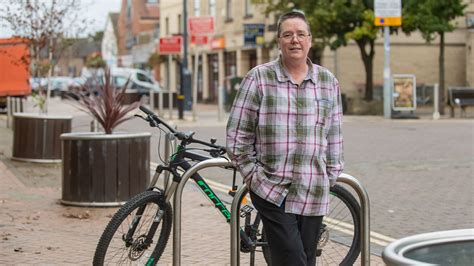
A New York City woman discovered a buried cell phone in her lawn, uncovering a potential “lawn spy ring” linked to a sophisticated tactic used by thieves to monitor residents’ movements and plan burglaries. The find has sparked concern among law enforcement and residents alike, prompting investigations into the extent of the operation and offering warnings about home security.
A Queens woman made a startling discovery in her front yard: a cell phone buried in the grass. Identifying herself only as Tiktoker “New York Nicolette,” the woman shared her story online, revealing that the phone was hidden inside a Ziploc bag. The discovery has led to fears of a potential “lawn spy ring” operating in the city, with thieves using the devices to monitor residents’ routines and plan burglaries.
“It’s in a Ziploc bag. And it’s buried in the ground,” Nicolette explained in her TikTok video. “This is right in front of my house, right by the gate.”
The phone’s purpose became clear when Nicolette turned it on. It was actively recording audio, leading her to believe it was strategically placed to gather information about her and her household.
“I turned it on, and it’s recording sound,” she said. “So, clearly, someone put this in the ground to listen to what’s going on in my house.”
Authorities have been alerted and are investigating the incident. The discovery has raised serious concerns about privacy and security, prompting law enforcement to issue warnings to homeowners to be vigilant and take steps to protect their properties.
The incident highlights a concerning trend of thieves employing increasingly sophisticated methods to target homes. By using technology to gather intelligence, criminals can carefully plan their attacks, increasing their chances of success and minimizing the risk of getting caught.
While the investigation is ongoing, the discovery of the buried phone serves as a stark reminder of the importance of home security and the need for residents to be aware of their surroundings. The incident has sparked a wave of concern in the community, with residents sharing their own experiences and offering advice on how to protect themselves from potential threats.
Experts recommend that homeowners take several steps to enhance their home security, including installing security cameras, reinforcing doors and windows, and maintaining a well-lit property. It is also important to be aware of suspicious activity in the neighborhood and to report any concerns to the authorities.
The “lawn spy ring” incident is a wake-up call for residents to take their home security seriously and to be proactive in protecting themselves from potential threats. As thieves continue to evolve their tactics, it is crucial for homeowners to stay one step ahead and to take the necessary precautions to safeguard their homes and families.
Deeper Dive into the “Lawn Spy Ring” Incident
The discovery of the buried cell phone in Queens is not an isolated incident, but rather part of a growing trend of thieves using technology to enhance their criminal activities. The incident highlights the importance of understanding the various tactics that thieves employ and the steps that homeowners can take to protect themselves.
Technological Advancements in Criminal Activities
In recent years, technology has become increasingly accessible and affordable, making it easier for criminals to use it to their advantage. From surveillance cameras to GPS trackers, there are a wide range of tools that thieves can use to gather information, monitor movements, and plan burglaries.
The use of technology in criminal activities is not limited to home burglaries. It also extends to other areas, such as identity theft, credit card fraud, and online scams. As technology continues to evolve, it is important for law enforcement and the public to stay informed about the latest trends and to take steps to protect themselves.
Analyzing the Thief’s Tactic
The “lawn spy ring” incident demonstrates a sophisticated tactic employed by thieves to gather information about their targets. By burying a cell phone in the victim’s lawn, the thieves were able to remotely monitor their activities and learn about their routines.
The phone’s ability to record audio allowed the thieves to eavesdrop on conversations and gather information about the victim’s schedule, habits, and vulnerabilities. This information could then be used to plan a burglary or other crime.
The use of a Ziploc bag to protect the phone from the elements suggests that the thieves had planned the operation carefully and intended for the phone to remain hidden for an extended period of time. This level of planning indicates that the thieves were experienced and well-organized.
The Psychological Impact on the Victim
The discovery of the buried cell phone has had a significant psychological impact on the victim, New York Nicolette. In her TikTok video, she expressed feelings of fear, anger, and vulnerability.
“I feel so violated,” she said. “It’s like, someone was watching me, listening to me.”
The incident has also raised concerns about privacy and security in the community. Residents are now questioning whether they are being watched and whether their homes are safe.
The psychological impact of crime can be long-lasting and can have a significant impact on a person’s quality of life. It is important for victims of crime to seek support from friends, family, or professionals to help them cope with the emotional trauma.
Law Enforcement’s Response and Investigation
Law enforcement has taken the “lawn spy ring” incident seriously and is conducting a thorough investigation. The investigation will focus on identifying the individuals responsible for planting the phone and determining the extent of the operation.
Authorities are also working to determine whether similar incidents have occurred in other areas. The investigation may involve analyzing the phone’s data, interviewing potential witnesses, and reviewing surveillance footage.
Law enforcement agencies are also working to raise awareness about the “lawn spy ring” tactic and to educate the public about home security. This may involve issuing public service announcements, conducting community meetings, and providing tips on how to protect homes from burglaries.
Community Response and Concerns
The discovery of the buried phone has sparked a wave of concern in the community. Residents are sharing their own experiences and offering advice on how to protect themselves from potential threats.
Some residents have expressed concerns about the lack of security cameras in their neighborhoods. They are calling on the city to install more cameras to deter crime and to provide law enforcement with valuable evidence.
Other residents are organizing neighborhood watch programs to increase vigilance and to report suspicious activity. These programs involve residents working together to patrol their neighborhoods and to communicate with each other about potential threats.
The community’s response to the “lawn spy ring” incident demonstrates the importance of collective action in addressing crime. By working together, residents can create a safer and more secure environment for themselves and their families.
Home Security Measures and Recommendations
The “lawn spy ring” incident highlights the importance of taking proactive measures to protect homes from burglaries. Experts recommend that homeowners take the following steps to enhance their home security:
- Install Security Cameras: Security cameras can deter criminals and provide valuable evidence in the event of a burglary. Cameras should be placed in strategic locations, such as near doors and windows, and should be visible to deter potential thieves.
- Reinforce Doors and Windows: Doors and windows are the most common points of entry for burglars. Reinforcing these areas can make it more difficult for thieves to break into a home. This can be done by installing deadbolt locks, reinforcing door frames, and installing security film on windows.
- Maintain a Well-Lit Property: A well-lit property can deter criminals by making it more difficult for them to hide. Install motion-sensor lights around the perimeter of the property and keep outdoor lights on at night.
- Trim Landscaping: Overgrown landscaping can provide cover for criminals. Trim bushes and trees to eliminate hiding places near doors and windows.
- Secure Valuables: Store valuables in a safe or other secure location. Avoid leaving expensive items in plain sight.
- Be Aware of Surroundings: Pay attention to surroundings and report any suspicious activity to the authorities. Be wary of strangers approaching the home and avoid opening the door to anyone who is not expected.
- Use Smart Home Technology: Smart home technology can enhance home security by providing remote monitoring and control of various systems. This includes security cameras, door locks, and lighting.
- Alarm System: Consider installing a monitored alarm system. These systems can provide 24/7 protection and can alert authorities in the event of a break-in.
The Broader Implications of Technological Crime
The “lawn spy ring” incident is just one example of the broader implications of technological crime. As technology continues to advance, criminals will find new and innovative ways to exploit it for their own purposes.
It is important for law enforcement, policymakers, and the public to stay informed about the latest trends in technological crime and to take steps to mitigate the risks. This includes investing in cybersecurity education, developing new laws and regulations to address technological crime, and promoting public awareness about online safety.
The fight against technological crime is an ongoing challenge that requires a collaborative effort from all stakeholders. By working together, we can create a safer and more secure environment for ourselves and our communities.
The Importance of Community Vigilance
The “lawn spy ring” incident highlights the importance of community vigilance in preventing crime. By being aware of our surroundings and reporting suspicious activity, we can help to deter criminals and protect our neighborhoods.
Community watch programs can be an effective way to increase vigilance and to build relationships between residents and law enforcement. These programs involve residents working together to patrol their neighborhoods, to communicate with each other about potential threats, and to report suspicious activity to the authorities.
Community vigilance is not just about reporting crime. It is also about creating a sense of community and belonging. When residents feel connected to their neighbors, they are more likely to look out for each other and to take pride in their neighborhoods.
The Role of Social Media in Raising Awareness
Social media played a significant role in raising awareness about the “lawn spy ring” incident. New York Nicolette’s TikTok video went viral, reaching millions of viewers and sparking a widespread discussion about home security.
Social media can be a powerful tool for raising awareness about crime and for sharing information about how to protect ourselves. However, it is important to be cautious about the information that we share online and to avoid spreading misinformation.
When sharing information about crime on social media, it is important to verify the information with reliable sources and to avoid making assumptions or spreading rumors. It is also important to be respectful of victims of crime and to avoid sharing information that could jeopardize their safety or privacy.
The Ongoing Investigation and Future Developments
The investigation into the “lawn spy ring” incident is ongoing, and it is possible that new developments will emerge in the coming weeks and months. Law enforcement agencies are working to identify the individuals responsible for planting the phone and to determine the extent of the operation.
It is also possible that similar incidents will be reported in other areas. If you suspect that you have been targeted by a “lawn spy ring” or other similar tactic, it is important to contact the authorities immediately.
The “lawn spy ring” incident serves as a reminder that crime is constantly evolving and that we must remain vigilant in order to protect ourselves and our communities. By staying informed about the latest trends in crime and by taking proactive steps to enhance our security, we can help to create a safer and more secure environment for ourselves and our families.
The Evolution of Surveillance Tactics
The “lawn spy ring” exemplifies a shift in surveillance tactics employed by criminals. Traditional methods like casing a neighborhood are now augmented with technology, allowing for remote monitoring and information gathering. This evolution necessitates a parallel advancement in security measures and awareness among residents. The ease of access to surveillance technology, coupled with the anonymity afforded by the internet, contributes to the proliferation of such tactics. Understanding this evolution is crucial for both law enforcement and the public to effectively counter these threats. Law enforcement needs to adapt their investigative techniques to address these technologically advanced crimes, while the public needs to be educated on how to identify and report suspicious activities involving technology.
Financial Implications of Security Measures
Implementing comprehensive security measures can be financially burdensome for homeowners. Security systems, surveillance cameras, reinforced doors and windows, and professional monitoring services all incur costs. While some measures, like trimming landscaping and improving outdoor lighting, can be relatively inexpensive, others require significant investment. This financial barrier can disproportionately affect low-income communities, making them more vulnerable to such crimes. It is therefore crucial for policymakers to consider providing financial assistance or incentives to help homeowners in these communities enhance their security. Furthermore, exploring cost-effective security solutions and promoting community-based security initiatives can help bridge the security gap and ensure equitable protection for all residents.
The Ethics of Surveillance Technology
The increasing use of surveillance technology, both by criminals and law enforcement, raises ethical concerns about privacy and civil liberties. While surveillance can be a valuable tool for preventing and solving crimes, it also poses a risk of infringing upon individuals’ rights to privacy. Striking a balance between security and privacy is a complex challenge that requires careful consideration of the potential benefits and risks of surveillance technology. Clear guidelines and regulations are needed to govern the use of surveillance technology, ensuring that it is used responsibly and ethically. Transparency and accountability are also essential to maintain public trust and prevent abuse. Public discourse and engagement are crucial in shaping policies that protect both security and privacy in the age of ubiquitous surveillance.
FAQ Section
1. What is a “lawn spy ring” and how does it work?
A “lawn spy ring” refers to a tactic where thieves bury a recording device, such as a cell phone, in a person’s yard to monitor their activities and gather information for potential burglaries. The device is typically concealed in a waterproof bag and used to record audio, providing insights into the residents’ schedules, habits, and vulnerabilities.
2. What should I do if I find a suspicious device buried in my yard?
If you find a suspicious device buried in your yard, do not touch it unnecessarily. Immediately contact your local law enforcement agency and report the discovery. Provide them with as much detail as possible about the device’s location and appearance. Avoid tampering with the device as it may contain evidence that could help in the investigation.
3. What are some effective ways to protect my home from burglaries?
Effective home security measures include installing security cameras, reinforcing doors and windows with deadbolt locks and security film, maintaining a well-lit property, trimming landscaping to eliminate hiding spots, securing valuables in a safe, and being aware of your surroundings. Consider using smart home technology and monitored alarm systems for enhanced protection.
4. How can I improve my neighborhood’s security and deter crime?
Improve neighborhood security by organizing or participating in a neighborhood watch program, communicating with your neighbors about potential threats, reporting suspicious activity to the authorities, and advocating for increased security measures in your community, such as more streetlights and surveillance cameras.
5. What are the legal and ethical considerations surrounding the use of surveillance technology for home security?
Legally, surveillance cameras must be positioned to record only your own property and not infringe on your neighbors’ privacy. Ethically, be mindful of the potential impact on privacy and civil liberties, and use surveillance technology responsibly. Transparency with neighbors and posting visible signs indicating the presence of cameras can help to address privacy concerns and deter potential criminals.









